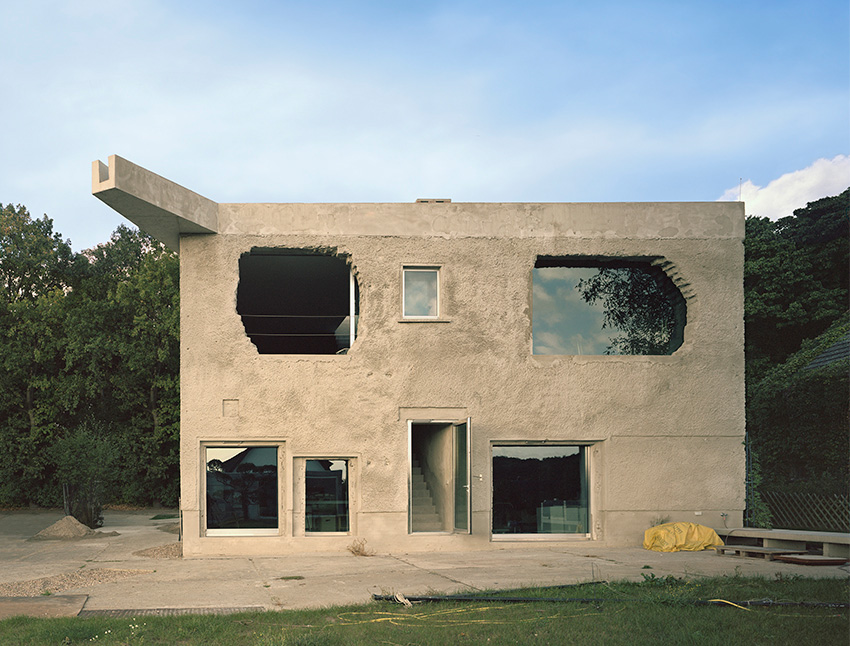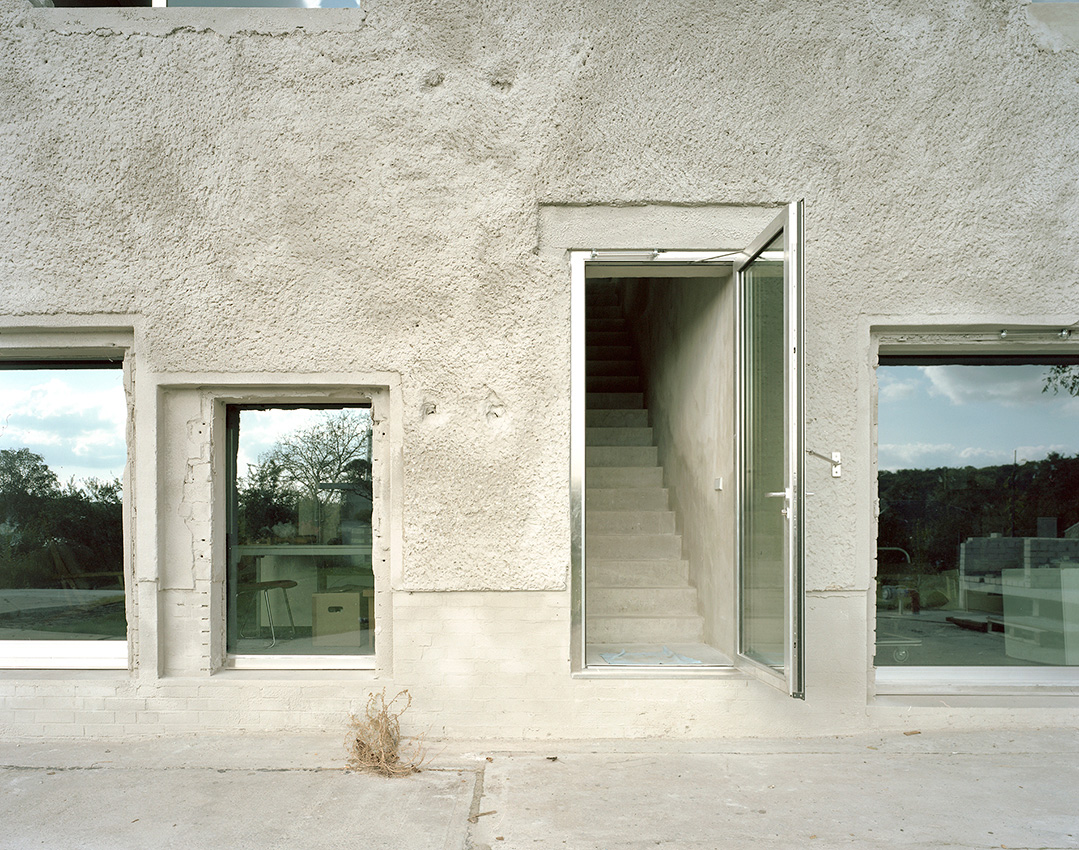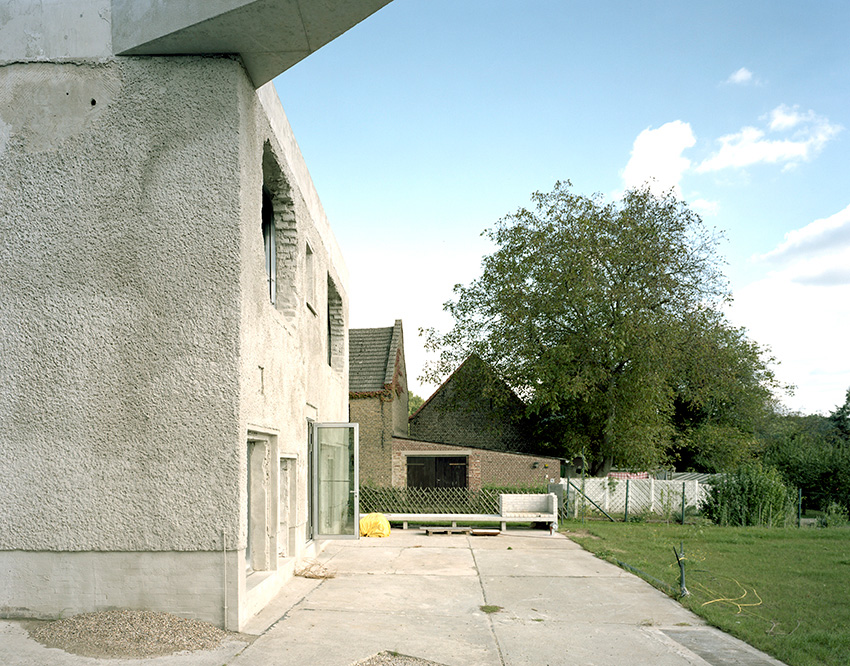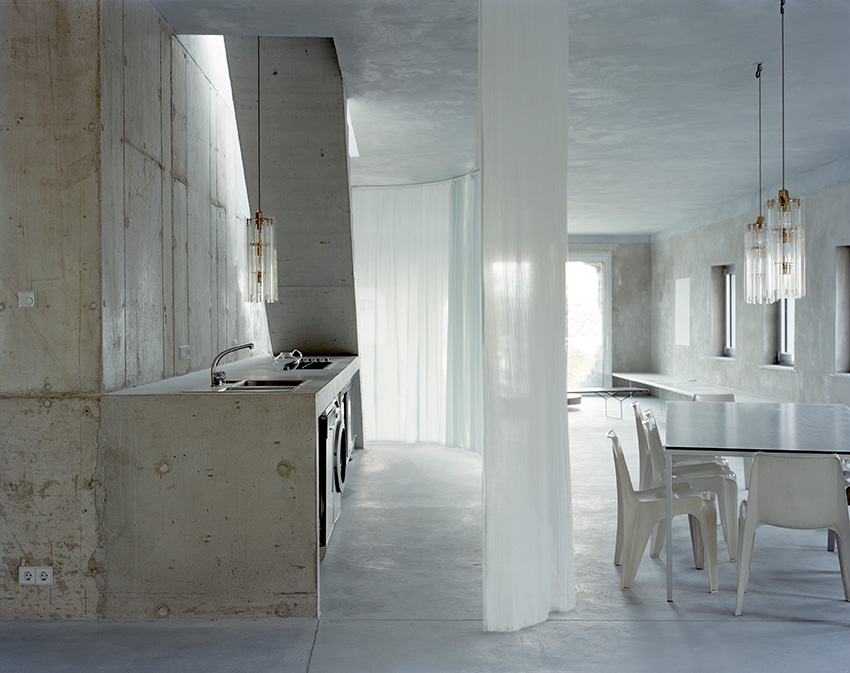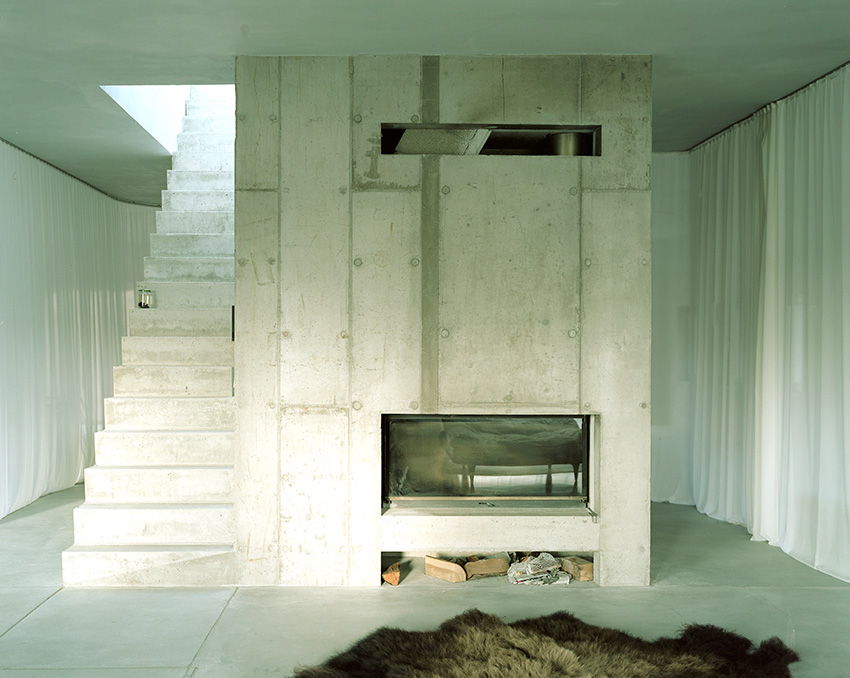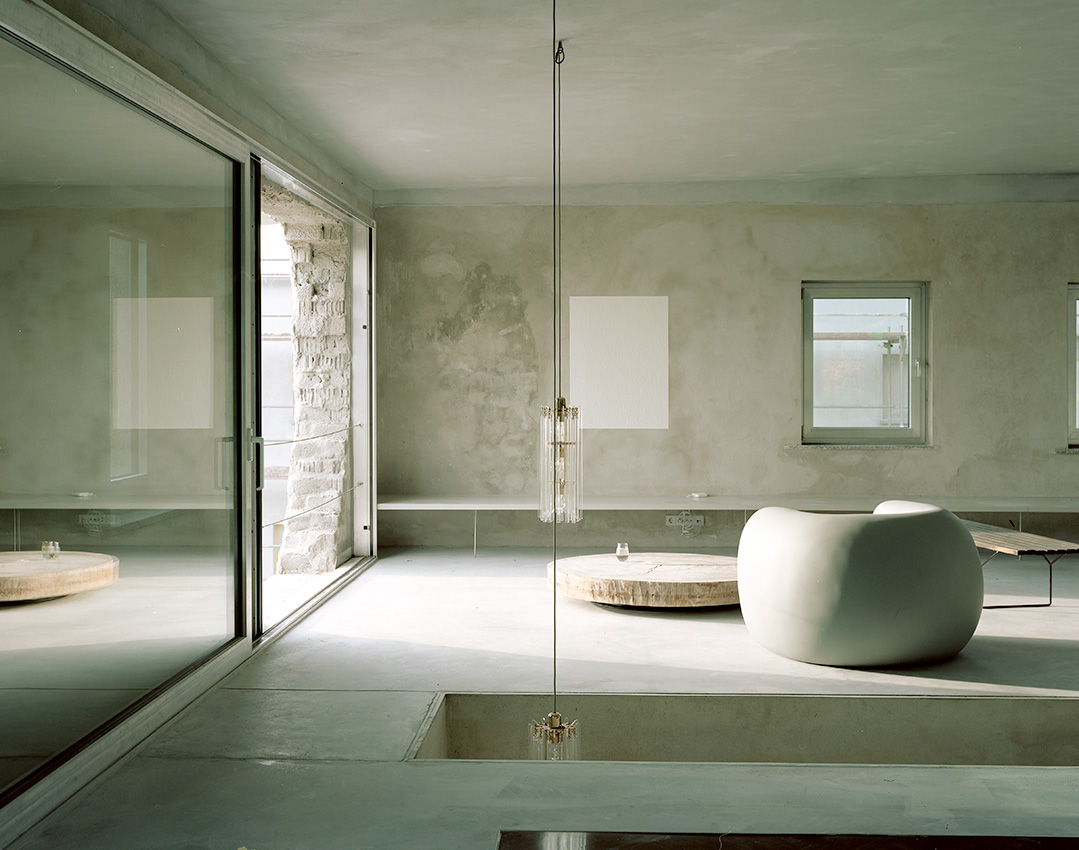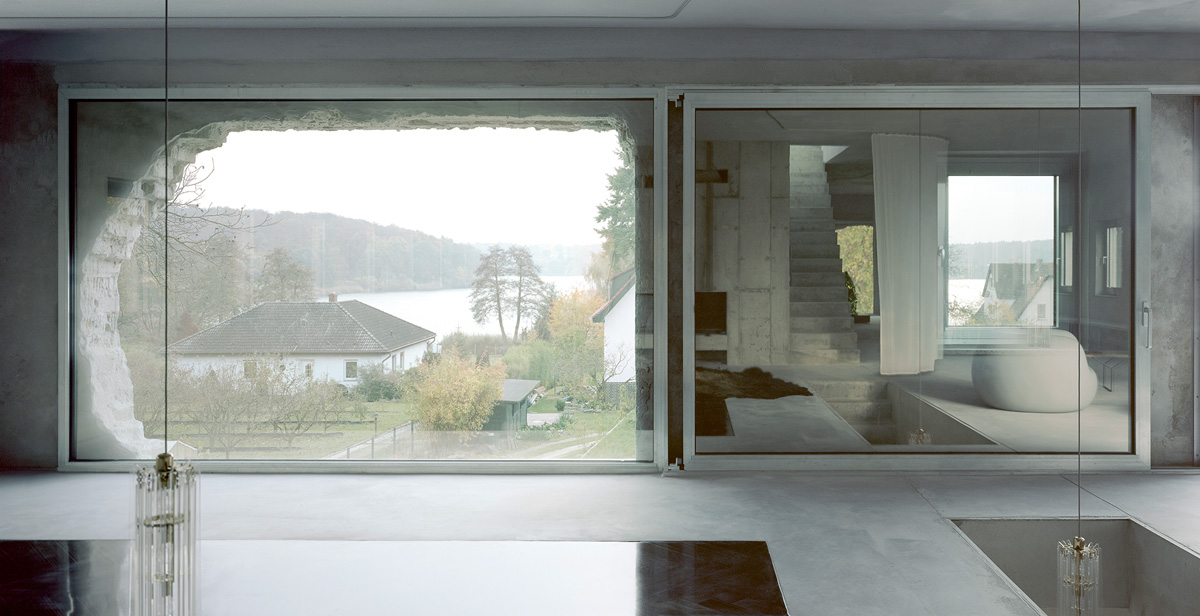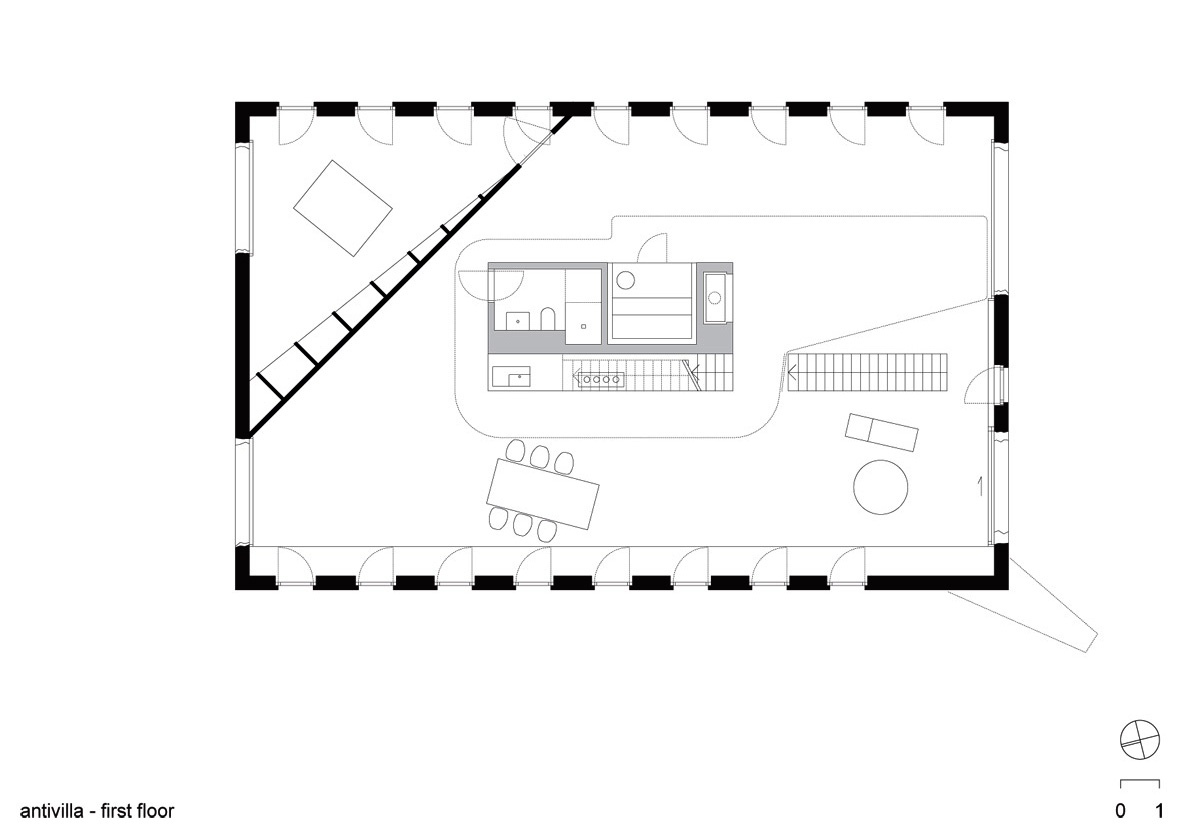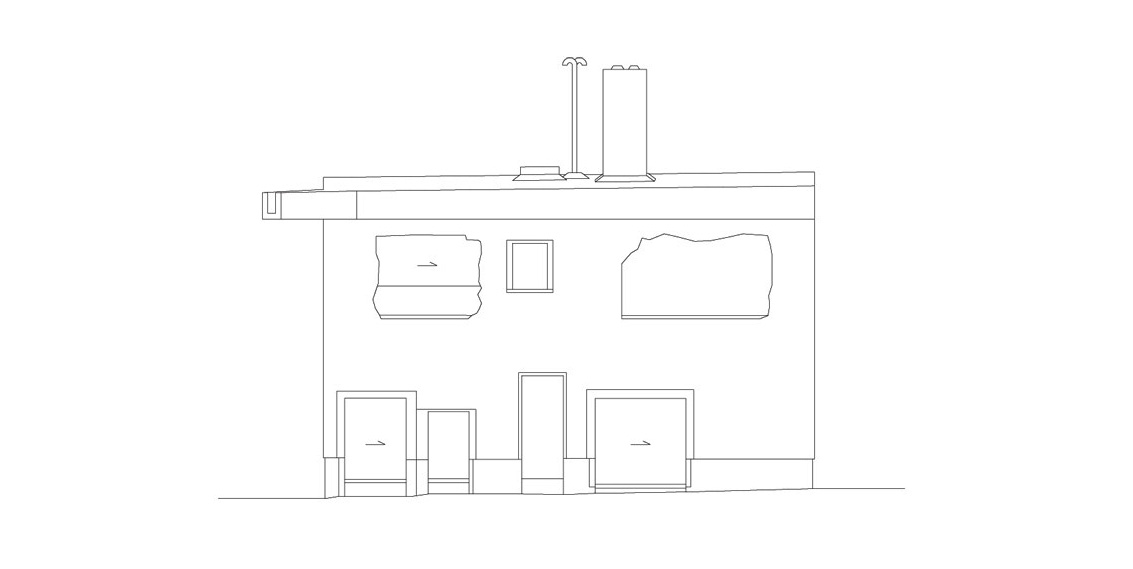Constructed from 2010 to 2015, the Antivilla, conceived by Brandlhuber+Emde, Burlon, presents a pioneering approach to blending living and studio spaces. In a cost-effective move, the project opted for a facade covered in shotcrete, bypassing traditional insulation methods for the existing structure. This innovative design choice not only reduced expenses but also added a distinctive architectural element.
Antivilla Technical Information
- Architect: Brandlhuber + Emde, Burlon
- Location: Rotkehlchenweg, 14476 Potsdam, Krampnitz, Germany
- Client: Arno Brandlhuber
- Project Year: 2010-2015
- Photographs: © Erica Overmeer
Antivilla is re-using & re-thinking Reyner Banham’s concept of “Architecture of the Well-Tempered Environment” from 1969, combining his two distinct principles of “generating space“: The existing structure representing the “constructional aspect“; the climatic gradation representing the “energetic aspect“.
– Brandlhuber + Emde, Burlon
Antivilla Photographs
Antivilla: A Bold Reinterpretation of Space and Climate
The transformation of the erstwhile GDR tricot factory “Ernst Lück,” situated by Krampnitzsee, just southwest of Berlin, transcends a simple cosmetic refurbishment. It challenges prevailing building norms, offering a fresh perspective on the interplay between architecture and the environment.
In a significant structural change, the original gabled roof, constructed from asbestos plates, was dismantled in favor of a flat roof design. This new roof serves dual purposes: aesthetically refreshing the building’s silhouette and functionally acting as a beam. This innovation permits openings up to five meters wide in the existing walls, enhancing the structure’s tangible presence.
Internally, the building underwent extensive modifications – non-essential walls were eliminated to create an open, fluid space. The redesign introduced a functional core on the upper level, encompassing a bathroom, kitchen, and sauna. The sauna’s stove emerges as a pivotal feature, orchestrating a gradient of climate zones that seamlessly transition from warm interiors to the cooler exteriors, all while being modulated by translucent curtains to preserve the expansive feel of the space.
This adaptive approach to space is particularly evident during the winter months when the habitable area consolidates to roughly 70 square meters, only to extend with the seasons’ shift. This spatial flexibility contrasts with the nuanced adaptation of lighting to meet specific functional requirements.
Antivilla thus revisits and innovates upon Reyner Banham’s 1969 “Architecture of the Well-Tempered Environment,” melding its foundational concepts into a coherent whole. The project honors the building’s existing framework as a “constructional aspect” while introducing “energetic aspect” through strategic climatic modulation, embodying a holistic approach to architectural renovation.
Antivilla Plans
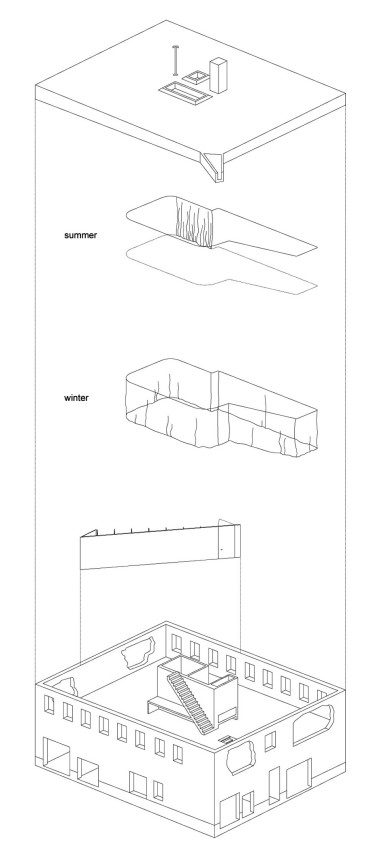
Antivilla Gallery
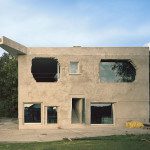
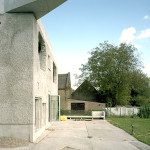
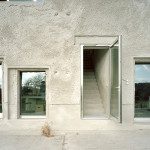
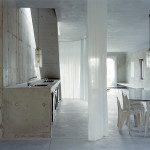
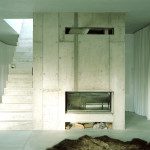
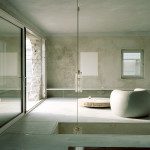
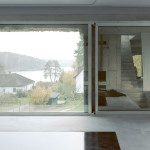
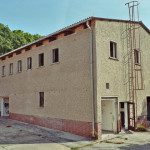
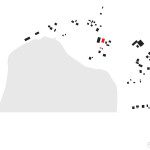
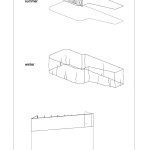
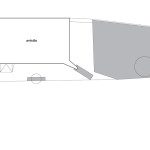
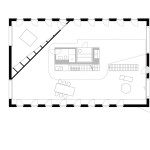
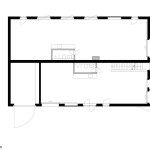
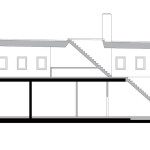
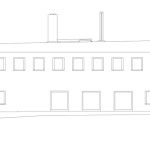
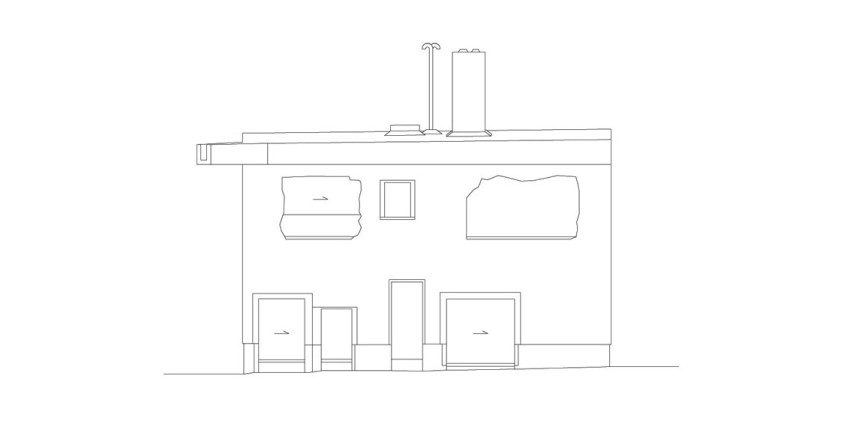
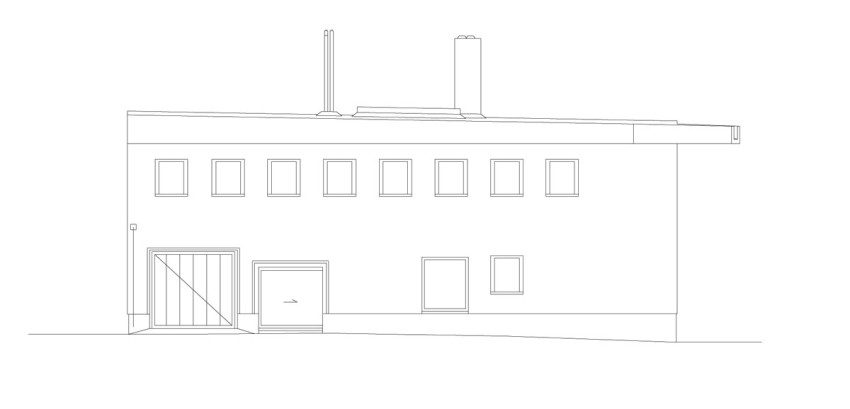
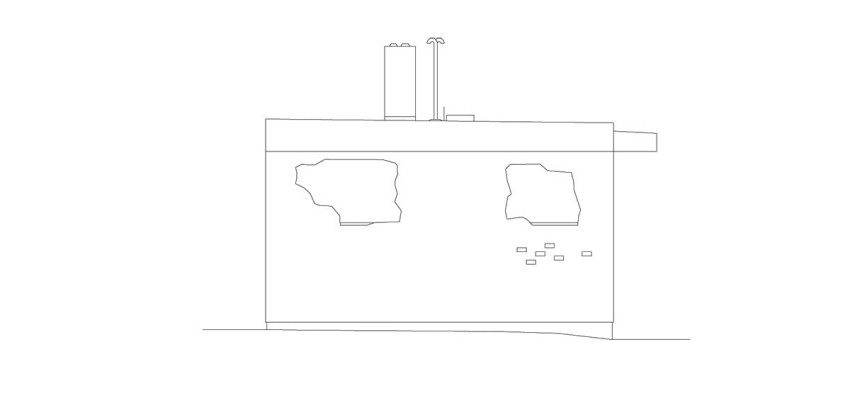
About Brandlhuber
Brandlhuber Architects, now known as b+ (bplus.xyz), is a pioneering architecture firm that integrates theory with practice across diverse formats, dedicated to addressing today’s social-ecological challenges, particularly through the adaptive reuse of buildings. Emphasizing a systemic approach, b+ sees architecture as an interactive process, viewing existing structures and regulations as opportunities for innovative design and transformation. The firm champions a collaborative model, engaging with various stakeholders to leverage collective expertise towards ecologically and economically viable solutions. By promoting a new architectural value system focused on collective responsibility and sustainability, Brandlhuber Architects aims to activate the potential within the urban landscape, fostering spaces that are adaptable, resilient, and forward-thinking.
- Design Team: Elsa Beniada, Peter Behrbohm, Klara Bindl, Victoria Hlubek, Tobias Hönig, Cornelia Müller, Markus Rampl, Paul Reinhardt, Jacob Steinfelder, Caspar Viereckl; Structural engineering: Karin Guttmann, Robert Hartfiel, Andreas Schulz / Pichler engineers.
- Main Material: Concrete

